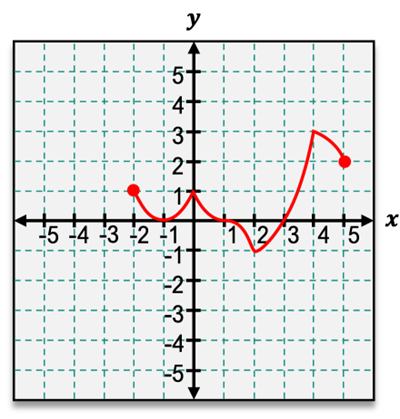Determine the intervals for which the function is concave up or concave down. State the inflection points.
Table of contents
- 0. Functions4h 53m
- 1. Limits and Continuity2h 2m
- 2. Intro to Derivatives1h 33m
- 3. Techniques of Differentiation2h 18m
- 4. Derivatives of Exponential & Logarithmic Functions1h 16m
- 5. Applications of Derivatives2h 19m
- 6. Graphical Applications of Derivatives6h 0m
- 7. Antiderivatives & Indefinite Integrals48m
- 8. Definite Integrals4h 36m
- 9. Graphical Applications of Integrals1h 43m
- 10. Integrals of Inverse, Exponential, & Logarithmic Functions21m
- 11. Techniques of Integration2h 7m
- 12. Trigonometric Functions6h 54m
- Angles29m
- Trigonometric Functions on Right Triangles1h 8m
- Solving Right Triangles23m
- Trigonometric Functions on the Unit Circle1h 19m
- Graphs of Sine & Cosine46m
- Graphs of Other Trigonometric Functions32m
- Trigonometric Identities52m
- Derivatives of Trig Functions42m
- Integrals of Basic Trig Functions28m
- Integrals of Other Trig Functions10m
- 13: Intro to Differential Equations2h 23m
- 14. Sequences & Series2h 8m
- 15. Power Series2h 19m
- 16. Probability & Calculus45m
6. Graphical Applications of Derivatives
Concavity
Struggling with Business Calculus?
Join thousands of students who trust us to help them ace their exams!Watch the first videoMultiple Choice
For the following graph, find the open intervals for which the function is concave up or concave down. Identify any inflection points.

A
Concave up: (−2,−1), (2,4); Concave down: (−1,1), (1,2), (4,5); Inflection points: (−1,0), (1,0), (2,−1), (4,3)
B
Concave up: (−2,−1), (2,4); Concave down: (−1,2), (4,5); Inflection points: (0,1), (1,0), (2,−1), (4,3)
C
Concave up: (−2,1), (2,4); Concave down: (1,2), (4,5); Inflection points: (1,0), (2,−1), (4,3)
D
Concave up: (−2,0)(−2,1), (2,4); Concave down: (0,2), (4,5); Inflection points: (0,1), (1,0), (2,−1), (4,3)
 Verified step by step guidance
Verified step by step guidance1
Step 1: Understand the concept of concavity. A function is concave up on an interval if its second derivative is positive on that interval, and concave down if its second derivative is negative. Inflection points occur where the concavity changes, i.e., where the second derivative changes sign.
Step 2: Analyze the graph visually. Look for regions where the curve bends upwards (concave up) or downwards (concave down). Identify points where the curve transitions between these behaviors, as these are potential inflection points.
Step 3: From the graph, observe the intervals of concavity. The function appears concave up on the intervals (-2, 1) and (2, 4), as the curve bends upwards. It appears concave down on the intervals (1, 2) and (4, 5), as the curve bends downwards.
Step 4: Identify the inflection points. These are the points where the curve changes from concave up to concave down or vice versa. From the graph, the inflection points are approximately at (1, 0), (2, -1), and (4, 3).
Step 5: Summarize the findings. The function is concave up on (-2, 1) and (2, 4), concave down on (1, 2) and (4, 5), and has inflection points at (1, 0), (2, -1), and (4, 3).

 6:38m
6:38mWatch next
Master Determining Concavity from the Graph of f with a bite sized video explanation from Patrick
Start learningRelated Videos
Related Practice
Multiple Choice


